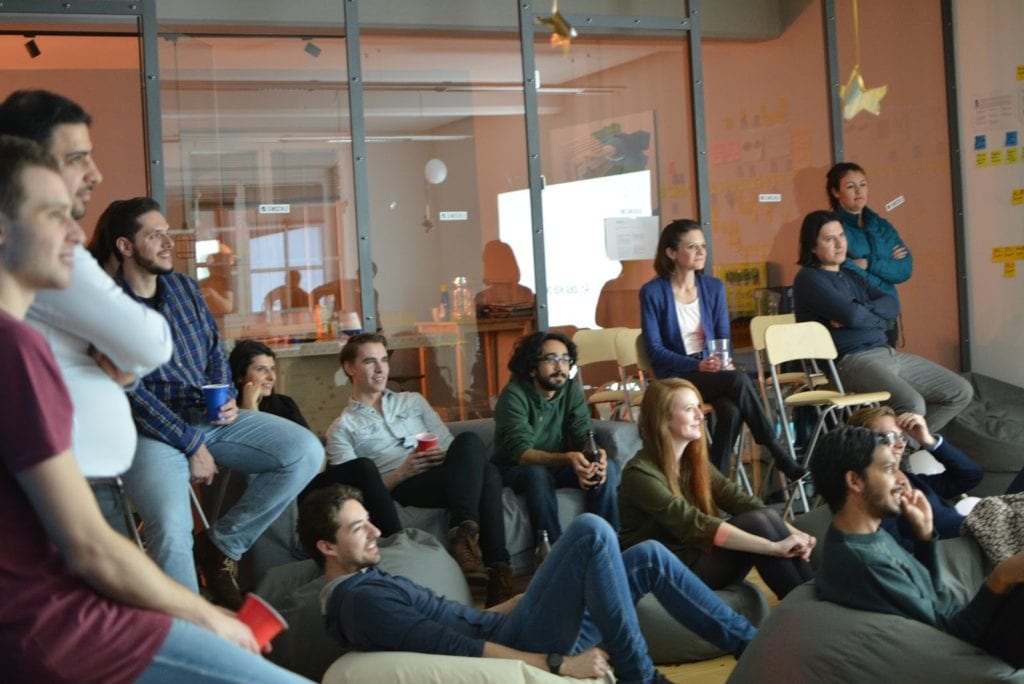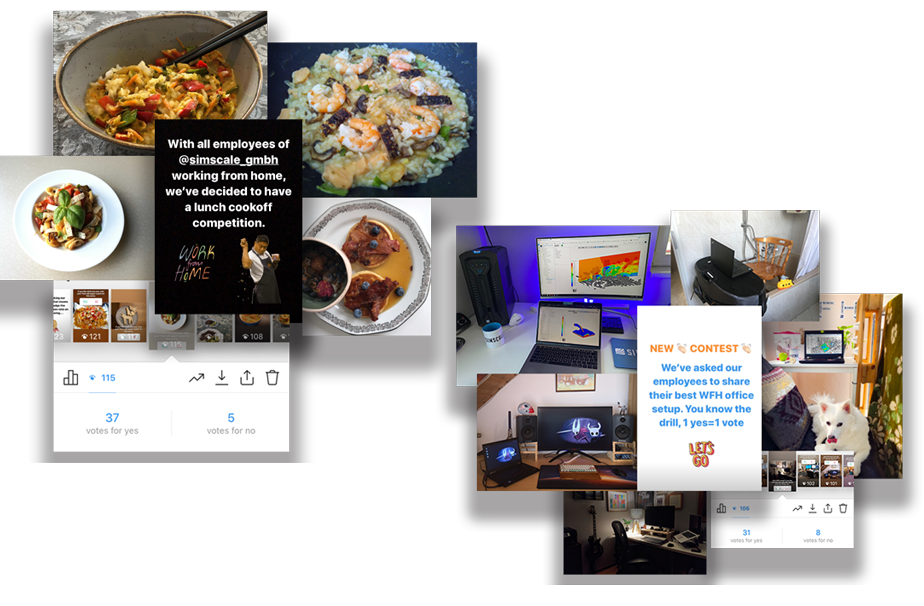Employee engagement goes beyond the responsiveness of emails, meeting attendance, and maintaining relationships with other colleagues; it’s a two-way relationship of emotional commitment between the organization and each employee. With this mutual commitment defined, the definition of engagement can be interpreted differently depending on the nature of the business environment.
Why Is Employee Engagement Important?
Employee engagement should be on every organization’s agenda, especially as higher engagement levels can increase productivity and morale, which in turn can lead to a reduction in absenteeism and increased profitability. Unfortunately, according to Gallup’s State of the Global Workplace, only 15 percent of employees are engaged in the workplace, while the figure in Europe is substantially lower at 10%.
Turning this on its head, we can assume many employees are simply unemotional about their work or even perceive their workplace and employer negatively, and ultimately not meeting their performance potential.
Defining Employee Engagement
According to a report from Gallup, a management consulting firm, engaged employees are ‘involved in, enthusiastic about, and committed to work and their workplace”. However, if you look at an organization in a different sector, for example, Willis Towers Watson who deal with risk assessment and insurance, they define employee engagement as an individual’s willingness and ability to contribute to a company’s success. Depending on your industry, organization or even where you are in the world, the definition of ‘engagement’ in relation to employees is bound to vary.

The concept of employee engagement must, in part, also consider employee happiness and satisfaction as pillars of achieving engagement. Recently, there has been a noticeable trend amongst top companies (Google, Zappos, Airbnb, Charity Water, Salesforce and Chefs Club) to create positions specifically dedicated to maintaining and improving employees’ experience and company culture—from Chief Happiness Officers to the Vice President of Global Employee Success.
Here at SimScale, we have always built towards a company culture that revolves more heavily on the well-being and happiness of employees as well as their day-to-day experience. By having our SimCare team that consists of members from various departments, we get the chance to meet on a weekly basis and discuss new strategies in order to continuously create a welcoming environment that emphasizes personal relationships in the workplace.
While creating strategies around improving employee engagement sounds straightforward in theory, how do companies with a large remote workforce or flexible/work-from-home culture adapt to the growing recognition and need for this?
Defining Employee Engagement for Remote Workers
As some of the aforementioned definitions of engagement allude to a commitment to the physical workplace, defining engagement for remote workers, flexible workers, or any workers that do not go into the office on a daily basis must take a different approach.
Even though only a small percentage of 5 million employees currently work remotely half-time or more, the percentage of employees working at home has grown 11% faster than the rest of the traditional workforce verticals.
Additionally, the most recent survey data on this topic revealed that the large majority of people would choose to work remotely if possible, at least part-time, for the rest of their careers. These statistics do not include the current crisis situation, which has increased or even enforced home office and remote work for small to large companies across the globe.
At SimScale, 17% of our employees work remotely full-time, while employees based in our Munich, Boston or New York offices can benefit from a flexible schedule and work-from-home policy. Since it was founded in 2012, SimScale has always had some portion of its workforce remote. Because of this, we know that communication, whether it be non-work-related small talk or even a quick Slack message, goes a long way for remote workers (pun intended).
“Home office from SimScale works because we have a clear performance-focused culture, transparent OKRs, and trust in our people. Only when you empower your team can you think about successfully engaging remote team members.”
Christopher Chamberlain, HR Director

According to one study by Slack, 85% of workers want to feel closer to their remote colleagues. Encouraging interaction through platforms like Slack, through video calls and conferences instead of just phone calls, and even through social group chats outside of work on WhatsApp can help mitigate feelings of isolation, and build strong relationships between coworkers, no matter where they are logging in from.
In this article, we will provide some top tips we have employed at SimScale to keep our remote workers close, that you can use for your own organizations.
SimScale Tips: How to Keep Remote and WFH Employees Engaged
At SimScale, our biggest facilitator of communication is through non-professional channels (in addition to day-to-day operational channels) in Slack and WhatsApp, that allow people to interact without the pressure of having to maintain a high level of professionalism. This is key.
We started by creating a #random channel, where everyone was invited to share interesting articles, news items, or just more general thoughts or ideas. Our hardworking, young, dynamic, and startup working culture advocates for itself that no one should be afraid to drop the occasional off-topic email, instant message or funny GIF. In addition to this, we have employed even more tactics to engage our workers near and far.
Tip One: Encourage Online Learning
As everyone reading this online article is probably well aware, learning doesn’t need to take place in a classroom, or even in person! There are so many eLearning courses available to organizations and individuals alike that can be utilized immediately.
At SimScale, we invite external experts and internal employees alike to give presentations on topics they are passionate about from AI technology and automated testing, to more SimScale specific topics. We then save all of the recordings and house them so they are accessible for any employee, even if they couldn’t attend the live session (in-person, or remotely).

Another great learning opportunity we implemented was Udemy, an online learning and teaching marketplace with over 100K courses, to support the desire for new knowledge and personal growth amongst our employees. In order to boost engagement with this tactic, we follow up by creating lunch/after-work events for people to take some time to focus on their courses, as well as hold group sessions for co-learning opportunities (that can be joined by remote workers); for example, there is a great American sign language (ASL) course!
Additionally, we have a dedicated channel for knowledge sharing for any topic. This is a great way to hold discussions company-wide, and hear diverse opinions on the chosen topic. The image below represents an example:

Tip Two: Engage in After-Work-Activities
In our Munich office, employees often hang out after work, create cooking events and parties, and generally socialize. This is not uncommon for startup companies with similar working environments. However, how do we involve remote workers?

More recently, we have begun hosting virtual ‘happy hour’ and ‘game nights’ through technological means. As this is a more recent implementation based on the current global situation, we now know how effective it can be to help people have a natural stopping point of working (which has been cited numerous times as one of the hardest factors of working from home) as well as unwind from their workday. Additionally, we have a non-work-related WhatsApp group where the conversations don’t stop when the clock strikes 6:00 pm.
Tip Three: Get Employees Involved in Competitions
Working remotely also means that we don’t always get to interact with colleagues from different departments on a regular basis. Especially during busy working hours, it can sometimes be more difficult to find the time to schedule a meeting or one-on-ones to chat with other people. Therefore, it is not only important to remind remote employees of their team members, but also to maintain team spirit and a working culture that allows fun and creative opportunities! One way of having an impact on our remote employees’ happiness is to create fun photo-of-the-day competitions. At SimScale, sharing is caring! By having challenges like ‘Best Work-from-Home Setup’ or cook-offs, we give our team members the opportunity to engage with others by sharing photos and information on a more personal level! Check out what we have done recently on our Instagram page.

“What makes SimScale very special is the great team spirit and appreciation that we have for each other. Whether it might be in the office or whilst working from home, by having fun competitions, (virtual) team events or other opportunities of sharing mutual interests, we want to create a caring environment where everyone feels like an integral part of the team.” – Lisa Widmann, Recruiter

Tip Four: Create a Virtual Book Club
Maybe you remember a time when you couldn’t wait for the next book in a series to come out (Harry Potter, perhaps?) and you would line up outside a bookshop and hope that there were enough copies. Or if you ever went to the library, only to find out that someone had checked out the book you desired, and you had to wait until they returned it, hoping they wouldn’t run it overdue. Luckily, with today’s technology these problems have virtually ceased to exist, and books can be ordered online, sent right to your house, or even downloaded onto your device.

At SimScale, we’ve created a ‘virtual’ book club, where group members can decide on a book, make a plan amongst themselves of how many pages per week, and meet face-to-face over a video call to discuss. Does this sound like something that could work for your office too, but you’re not sure how to get started? Check out this ‘topical’ book list from The Times.
Tip Five: Schedule Virtual Lunch and Coffee Dates with Colleagues
During a regular day at the office, we are used to seeing our colleagues on a daily basis, having chats with them and spending our lunch breaks together. On one hand, to keep non-business related conversations and personal relationships going, it can be very helpful and beneficial to proactively schedule and encourage virtual lunch meetings at your company.

On the other hand, for those who simply don’t like to be on their own whilst eating their lunch, there is no reason not to do it virtually. Those meetings can be with the team, with individuals or colleagues you normally don’t get to interact with on a regular basis.
Another fun way of doing this can be weekly sessions with different topics to talk about and share the results with the team, or in our case SimCare. This can create a common ground and help introverts, as well as extroverts, find a topic to talk about with team members they are not yet familiar with.
Employee Engagement Conclusion
As we conclude our list of top engagement tips, it is also important to note that the tactics we employ at SimScale will not necessarily be effective for your organization, as company environments and cultures differ on innumerable factors. Creating a ‘virtual book club’ will not guarantee that your employees feel closer or offering online courses may not be right for your business as it depends on your workforce’s background and interests.
The purpose of this list was to illuminate how a proactive approach to facilitating communication and connection among employees should be considered, based on your company’s goals. It is then the job of your HR department, and other interested parties (for example, our SimCare team!) to see what works and what doesn’t, as well as to take ownership and drive the activities so that engagement is retained.
In conclusion, keeping remote workers and WFH staff involved, engaged, and happy comes down to a simple rule: communication is key!



